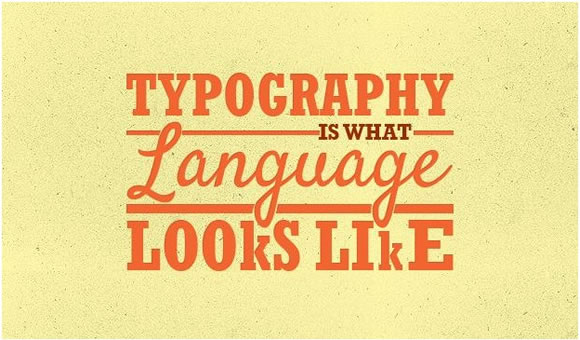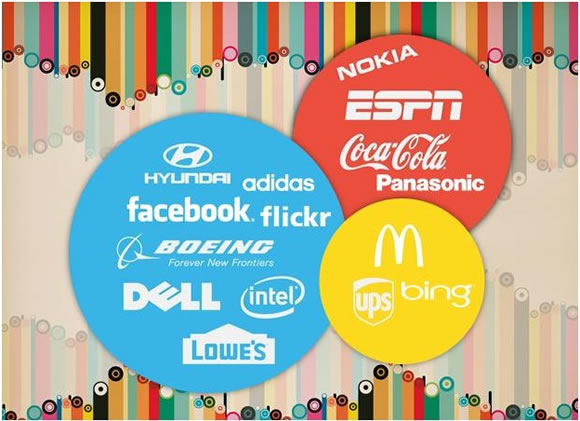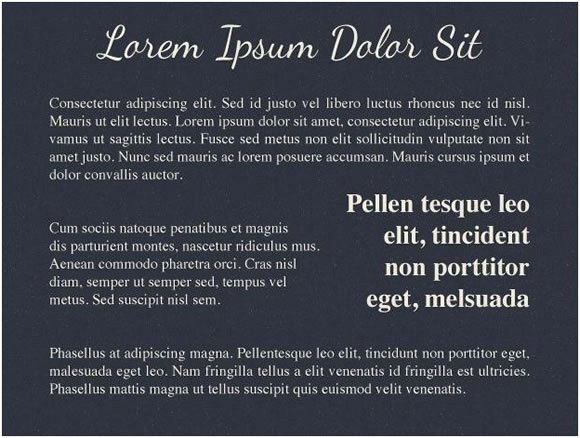Website design Typography & Why this is a Big Deal
Posted on March 6, 2014 at 12:50 pm
For the layman, there’s little or no difference between the terms ‘typography’ and ‘font’. The words are frequently used interchangeably, that’s under no circumstances a huge deal because the general populace is purely going to be talking about both within the most superficial manner possible. Besides, why unload a number of technical definitions at the hapless common man who has just as much to do with web designing as I do with cooking? I mean, take a look at me. I never trouble myself with insignificant terms like baking, flambéing, grilling, or roasting or attempt to know the way they’re different from one another. If the general product is delicious, i’m happy.

However I shake off my nonchalance after I see fellow web designers fumbling around with these basic concepts. i will not let that slide. I take it upon myself to coach these misguided souls and might always count directly to deliver a monologue on typography and why it holds a spot of significant importance in website design. And if any of them should finally end up saying something like “Typography is all about fonts” … well, they’re only inviting catastrophe of the worst kind on their heads.
Let’s make something absolutely clear before we move to any extent further – Typography isn’t just about selecting the prettiest looking font. If any web designer is harboring this notion, he either has a great deal to profit or a whole lot to UNLEARN. This sort of oversimplification seriously isn’t acceptable, indicating laziness on a designer’s part to grasp the total scope of typography in website design.
So, what’s typography?

In his book, Canadian typographer Robert Bringhurst describes typography as “the craft of endowing human language with a durable visual form”. Echoing similar sentiment is Ellen Lupton who believes that “Typography is what language feels like.”
Simply put, typography is the art and means of arranging type. It encompasses every possible element that could affect website design, including selection of typeface, color palette, line length, point size, layout, and design integration.
Next question – what’s the purpose of typography?
Since it’s integral to web designing, most of the people are under the impression that the aim of typography is to make an internet site beautiful. This might probably be because of the truth that the word ‘design’ is synonymous with making things look pretty. You understand how interior design is all about making homes look beautiful and landscape design has to do with making gardens look beautiful? Following the identical reason, typography – a vital part of website design – deals with creating a website look beautiful.
Not really.
To explain, let me borrow from the words of Swiss Typographer Emil Ruder “Typography has one plain duty before it and that’s to convey information in writing. No argument or consideration can absolve typography from this duty.” Briefly, the key aim of a typographer is to verify readability.
So … How important is typography?
Hmmm … let’s see. 95% of an internet site is content. Typography is the art of displaying content. A=B, B=C, so, it’s safe to make the idea that typography accounts for greater than 90% of website design.

No, no, don’t fall from your chair yet. Or, dismiss me as a typography fundamentalist. Unconventional as my views possibly at the importance of type inside the success of website design, I’m not the sole one who believes so. Actually, this isn’t even a latest idea. In 2006, Oliver Reichenstein, founder and director of design agency Information Architects, said the identical thing in a single of his articles. Titled “Web Design is 95% Typography”, the post begins with an exceedingly matter of fact observation:
95% of the knowledge on the internet is written language. It is just logical to claim that an internet designer should get good training mostly discipline of shaping written information, in other words: Typography.
What was that about great minds thinking alike? Anyway, what i locate surprising is that it’s been 8 years since this text was written and extremely little has changed within the mindset of the common web designer. Website design remains about fancy graphics, and typography remains about pretty fonts. Facepalm!
Why is it so difficult to provide type its due importance in website design? How is it that professionals are inclined to forget that flashy graphics, illustrations, and colorful theatrics aside, the only major thing for individuals coming to websites is content? Compromise even the slightest on how it’s presented and you’ll hamper the content’s readability and perception. Is that a risk you’re willing to take?
If you’re still seeking to be convinced, listed here are a number of explanation why typography isn’t something that needs to be trivialized or trifled with.
1. It conveys a visible summary of the web site

Haven’t you ever checked out an internet site and thought to yourself, “Wow, that is so business-like.” Or “Hey, that is loads fun” or “That is an exceptionally cool and hep vibe they’re sending out”? Guess how they could pull that off? With the assistance of typography, in fact!
Apart from the appearance of an internet site, the emotions it evokes might possibly be influenced by the selection of fonts and hues and the arrangement of text on a page. One brief look into the page is all it takes. Your website will either ring a bell along with your audience or distance them forever.
2. Typography carries the emblem forward

Really? Typography plays a job in branding? Sure it does! Don’t believe me? Do an easy experiment. Take a favored brand – just choose any person – and alter its font and typeface. Now study it. Doesn’t it change all the perception of the logo? Make you’re feeling like you’ve stepped into another universe where things are skewed, unbalanced and out of proportion?
The logo defines the emblem to a very good extent. It establishes the identity of a brand. No arguments there. However, having an excellent logo and never bothering to enrich it with web typography isn’t going to perform much. Then again, if you’re ready to achieve overall harmony between the symbol, font, and typeface … you’ll have a real winner to your hands.
3. It makes content look attractive

Before you jump at my throat, I’d want to clarify something really quickly. it’s not that i am attempting to say here that typography could make bad content look worthwhile. Unless a duplicate has intrinsic value, this will not engage the audience. It could draw them in briefly perhaps, but when they recognize the deception, they’ll move away at lightning speed.
However, i am going to say this – the foremost seductive, well written content on the earth will fall flat on its face in the event you present it in an 11 point bright pink Times New Roman. On an analogous note, it’s possible to take semi-decent copy and make it so appealing that readers can’t help but read it.
4. It guides your readers throughout the content

Having great content isn’t enough. It’s important to provide it well too. Typography helps in that besides. Everything – from the dimensions of the text to its arrangement and alignment at the page to the colours you opt – can impact how your content is read. Not just will it direct visitors to a very powerful bits of data on a page, but reveal the structure and flow of the web site.
This factor becomes especially evident when you’re reading articles online. In case you found a 1500-word plain text post, regardless of how interesting the subject, you’ll struggle to get through it. However, just a little tweak here and there using different typeface, font size, and colours, and the thing suddenly transforms right into a thing of beauty that keeps you hooked your complete approach to the top.
5. Good typography maintains consistency on a web site
Internet users are inclined to hunt down order and familiarity in every website they visit. Change the principles of your website arbitrarily and you’ll find yourself confusing them or making them feel uncomfortable. In case your users should learn the tricks of navigating your website each time they land on it, you may be dead sure they aren’t going back after the second one or third frustrating attempt.
Good typography pulls a web site together. By maintaining uniformity within the use of all elements of a webpage, including font, typeface, size, color, etc., a typographer helps boost user experience and sends conversion rates soaring throughout the roof.
All my life I’ve been guided by something type designer Mathew Carter once said “…type is a gorgeous group of letters, not a bunch of lovely letters”. There’s no denying that typography has the power to shape your visitors’ perception and their engagement with the positioning. It could affect conversions and also will decide how effectively the content is being delivered. It’s high time we set aside our obsession with aesthetics and ‘pretty-fying’ content and desirous about using typography as a formidable tool which can take your website places.
Posted in Web Design
